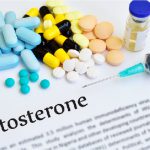Testicular cancer is the cancer in the testicles, the male reproductive organ that makes hormones and sperm. To learn more about testicular cancer, read here.
Testicular cancer common treatment methods:
Testicular cancer is one of the most treatable forms of cancer and the following are the most common treatment options:
Surgery:
Surgery is one of the best methods of treating testicular cancer and can completely eliminate cancer in the early stages and even if the testicular cancer has metastasized, it is essential to remove one or both the testicles if the cancer has affected both. Radical inguinal orchiectomy and retroperitoneal lymph node dissection are the two major surgeries for testicular cancer treatment. Read more about surgery here.
Chemotherapy:
Chemotherapy uses drugs to kill cancer cells throughout the body and is used if the testicular cancer has metastasized to other organs or if there is a chance of recurrence. It can be used both before the surgery and after as an adjuvant therapy. To learn more about chemotherapy for testicular cancer, read here
Radiotherapy:
Radiotherapy involves killing cancer cells using high intensity radiation and is also used if the tumours are to be targeted unlike chemotherapy which kills cancer cells in all body parts, however due the risk of radiotherapy to cause infertility, it is used only in case the cancer has spread or can recur. To learn more about radiotherapy for testicular cancer, read here
Other treatment options for testicular cancer:
Surveillance:
Surveillance refers to the monitoring of the patients under strict medical guidance and is mainly about the healthcare teams having a close watch on the patients so that they do not develop a recurrent or a secondary cancer or show signs that the cancer is spreading. Almost 50% of the patients who have monitored regularly have been treated with the developing cancer without major treatments. It mainly helps in avoiding the adverse side effects that the patients could face due to chemo or radiotherapies.
The monitoring only works out if is there is good commitment between the the doctor and the patient. The patients have to make get checked very regularly. Since, this monitoring is of no harm to anyone, it is recommended for all.
Depending on the patient and their medical health, surveillance might have to continue upto five to ten years. Initially, the patients will have to be monitored for once in every two to six months. As time passes, the intervals are increased. Patients who have been treated with nonseminomas have to get checked more frequently than the ones who have been treated with seminomas. As a part of monitoring, the patients will also be guided regarding their diet and exercise, and boost mental health as well.
Surveillance often involves the following tests to monitor the patients:
- physical examination of the testicles
- Blood tests/tumour marker tests
- chest x-ray
- CT scan of the abdomen
Surveillance is the prefered treatment option for the following cases:
- In early stages:
If the cancer has not spread beyond the testicles and if it not spreading, most experts prefer to closely monitor the patient instead of going with a course of treatment. If the cancer does not spread beyond the testicles, no other treatment may be required.
- Post surgery:
Instead of chemotherapy or radiotherapy post surgery to ensure that all cancer cells have died, surveillance may be preferred if the doctors do not expect a relapse since the side effects of chemotherapy and radiotherapy outweigh the chance of recurrence. If the testicular cancer recurs, the patient can then be given the above two treatments.
Complications in testicular cancer treatment:
Though surveillance does not have many complications for testicular cancer, the frequent visits and check-ups could actually stress out the patients. The patients could face physical stress in going and visiting the surveillance teams so often, also the tests that it includes are not so economical, which makes it difficult for the patients to get them done for all visits. Another important factor to consider is the psyche of the patient who has to live with the knowledge of having cancer and not being treated for it, as this can be mentally stressful to one.
Stem cell transplantation:
This is rarely used as a treatment option for testicular cancer as it is not likely that this cancer type spreads too much too fast. It is used to enable high doses of chemotherapy in case the testicular cancer has metastasized to other body organs or if the cancer has recurred.
Stem cell transplantation in treatment of this cancer type involves collecting and freezing the stem cells of the patient if they are not affected by cancer followed by high doses of chemotherapy to kill cancerous cells in the body. The bone marrow gets destroyed due to this and so the stem cells are given back to the patient for them to infuse back and start producing blood cells normally.
Complications in testicular cancer treatment:
Nausea, vomiting, infection, mouth or throat pain, unnecessary bleeding, needing blood transfusions, lung problems and graft failure are some of the major side effects of stem cell transplantation. Since allogeneic transplant is not usually required in stem cell transplantation for treating testicular cancer, complication of graft versus host disease need not to be considered. The side effects of stem cell transplant are compounded by the side effects of chemotherapy and are included above. Read more about the complications of testicular cancer here. Also, to maintain a healthy lifestyle, a good follow up up care has to be taken. Know more on follow up care for testicular cancer here.




